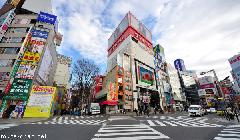The interior of a traditional Japanese house has a unique design, with many specific elements. One of these elements is tokonoma (from toko, “floor” and ma, “space” or “room") a slightly raised alcove with the size of one tatami mat, a place to display ikebana arrangements or hanging scrolls. Depending on the room size, the tokonoma can be smaller (one half of a tatami) and the content is usually changed according to seasons or to honor an important guest. In this photo from an old farm from Boso no Mura, Chiba, you can see displayed kagami mochi and shimekazari, an indication of the date the picture was taken: around the New Year…
An interesting fact is that tokonoma should not be confused with a simple display: it is a sacred space and it is forbidden to step inside the tokonoma. But an even more interesting fact is that when an important guest is seated in the room, he or she will be seated close to the tokonoma, but with the back to it! The reason is all about decency and modesty: the host wouldn’t want to show off with the content of the tokonoma…
EXIF Info:
|
Yesterday’s Japan Photo:Studio Alta, a wide-angle street view |




